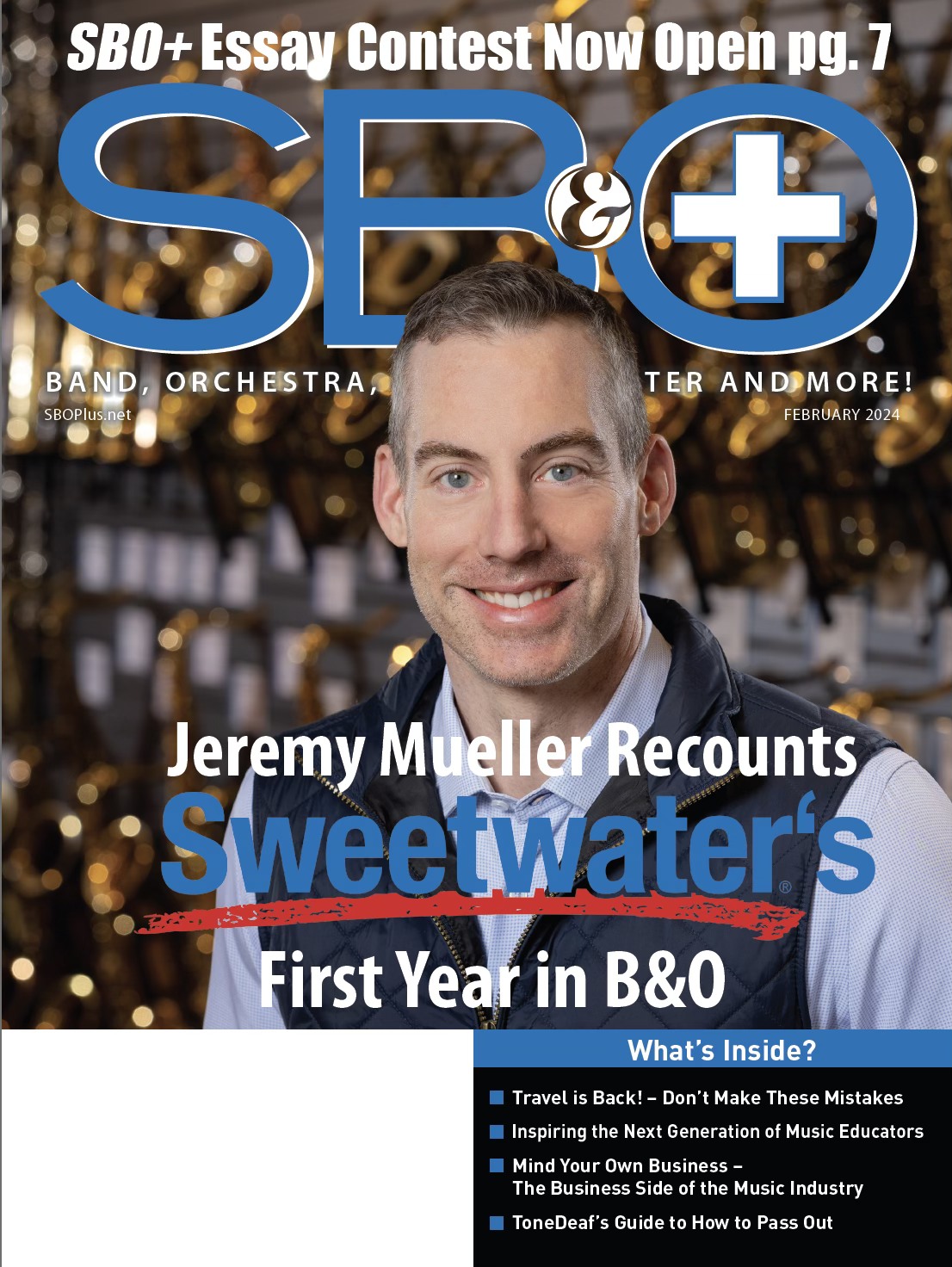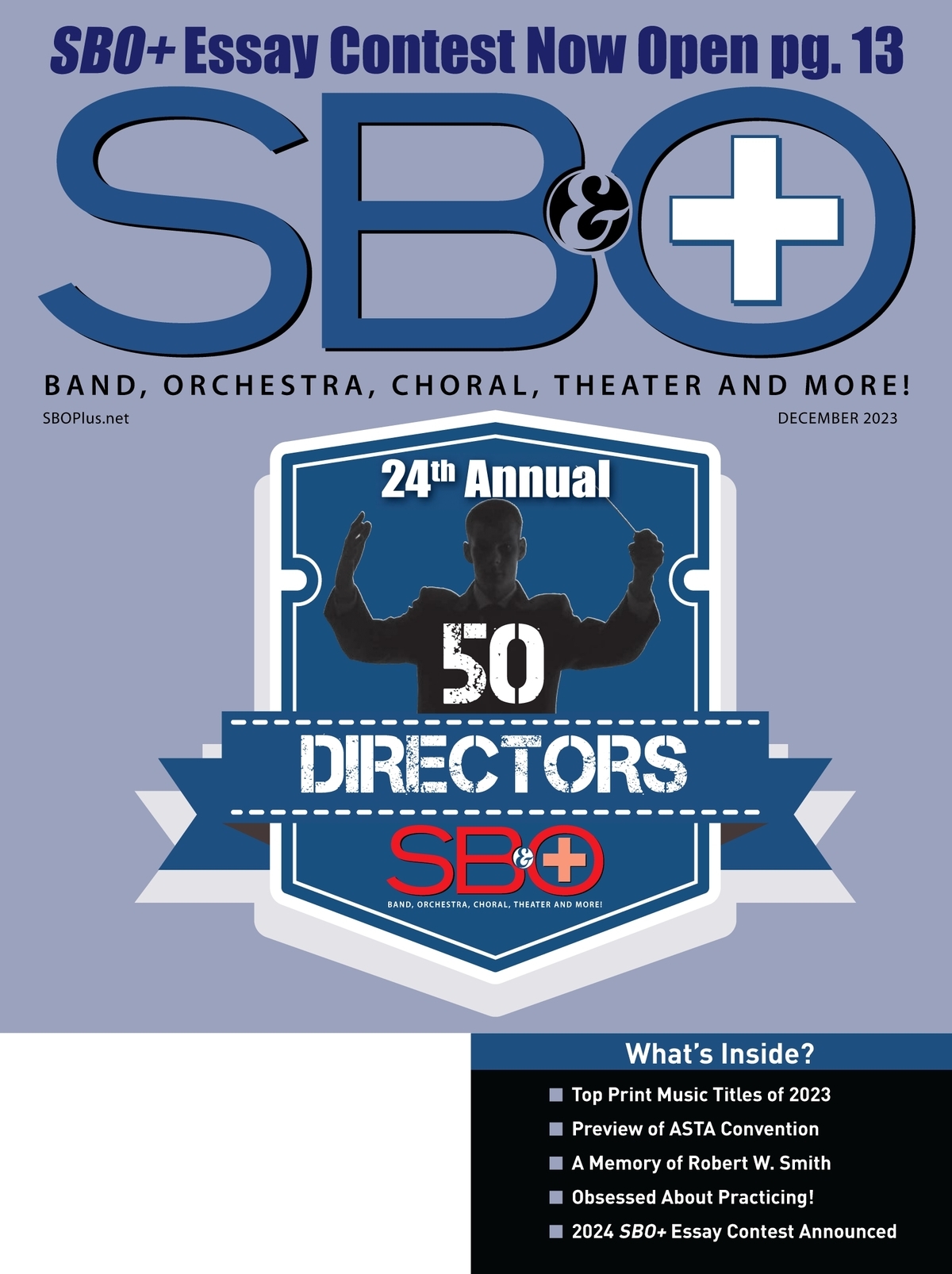EDUCATORS SUBSCRIBE FOR AS LOW AS $0.00! CLICK HERE!
 I took up the clarinet in junior high school and fell in love with the instrument immediately. Its look, its feel, its tone and the facile way the fingers can run over its holes appealed to me right away.
I took up the clarinet in junior high school and fell in love with the instrument immediately. Its look, its feel, its tone and the facile way the fingers can run over its holes appealed to me right away.
By the time I graduated high school in 1969 I almost felt like I couldn’t get enough of the clarinet, but I also developed an insatiable appetite for print band and orchestral music, which I owe to the myriad print materials mailed to me throughout my high school years.
This was the late 1960s, a golden age of pop, and also, I might add, a golden age of printed concert band and orchestra pop music. I somehow got on the mailing lists of several print-music publishers and they regularly sent me miniature conductor scores, condensed conductor scores, complete band and orchestral scores, individual instrument parts, and much more. It was all fascinating to my young mind as now I could see not just the clarinet part that I was previously only privy to but the parts of everybody in the band or orchestra! It was a wonderful learning experience that gave me an appreciation of how the instruments of a band or orchestra all work together to perform as a synchronous whole, not to mention it sparked my curiosity as to how works are composed and arranged.
At night I would curl up in bed with these miniature scores and read them like they were an exciting novel. I got to know the names of some of the prominent arrangers like Glenn Osser, Sammy Nestico, Paul Yoder, John Warrington, Lloyd Conley, Jim Christensen, Ed McLin, Howard Cable, Kelly James, Clifford P. Barnes, and Richard Fote. Over time, my curiosity about them grew and I wanted to know more about their backgrounds and how they learned their craft and became renowned professionals. At the same time my passion for music grew even stronger.
For all this I was grateful to the publishers who provided me with a steady stream of promotional music, which initially sparked my burgeoning interest in band and orchestral music, and then fueled my fire by keeping the mailings going. Like my friends who were passionate about baseball and followed the major-league teams I became a fan of the print-music publishers and their names held special meaning to me as each seemed to have a particular style and personality. These were companies like Hal Leonard, MCA Music, Leeds Music, Boosey and Hawkes, and Charles Hansen Educational Music and Books.
The flow of print music in the mail was continuous and every time a new arrangement arrived I eagerly opened the package so see if it was a composition I knew or if there was something I didn’t know and would like and could learn. This being a golden era of pop, many of the arrangements I received were of pop tunes. Some conductor scores had at the beginning the composition’s instrumentation. Although I played clarinet in my high school concert band I hadn’t previously paid much attention to the other instruments as I focused on playing my part. But now I could see the instrumentation that went into an arrangement.
For example, a Glenn Osser arrangement in Leeds Music’s “Swingin’ Big Sound” series might include parts for first, second, third and fourth B-flat trumpet, first and second E-flat alto saxophone, first and second B-flat tenor saxophone, E-flat saxophone, first, second, third and fourth trombone, piano, bass, guitar and drums. I would look over these instruments’ parts and see how their music was written, the keys they were written in, and how all the parts configured together.
I often received a miniature score of the first B-flat cornet part, which I liked because this part was usually the melody of a song and now I had the music to some of my favorite songs as well as that this part enabled me to learn the melodies of tunes I was unfamiliar with. One miniature pamphlet might have many melodies such as Hansen’s “103 Great Tunes” for band so I would now have the melody lines for everything from “Thunderball,” “Mister Kiss Kiss Bang Bang,” “That Old Black Magic,” “Lemon Tree,” “Bourbon Street Parade,” “Kansas City “Satisfaction” “Mexican Hat Dance,” and “The ‘In’ Crowd” to “That Darn Cat,” “Red River Valley,” “Cocktails for Two,” “Tangerine,” “Mona Lisa,” “Isn’t It Romantic,” “Love Letters, and “Heart and Soul.” The tunes were labeled in such categories as traditional, top standards, top pop, war and peace, summertime, Irish songs, sacred songs, south of the border, sea songs, Dixieland beat, motion picture themes, Richard Rodgers, “cowboys and Indians,” western songs, and famous songs. It was like having a handy little fake book to both standards and popular tunes of the day and I learned the titles of a plethora of songs, song genres, names of composers, and much more. These little score booklets were an education unto themselves!
The Hal Leonard miniature scores for full band were often packaged in clear plastic pouches and included the conductor sheet as well as all the instrument parts. I found the tunes they sent were particularly fun, songs like “Those Lazy-Hazy-Crazy Days of Summer,” “No Matter What Shape,” and “Bunny Hop.”
With these miniature full band scores, I could now study the arrangements of pop tunes for concert band that I otherwise would not have looked into. I could take out the score for a composition like “The Hokey Pokey” and peruse the parts for its different instruments: D-flat piccolo, first, second and third B-flat clarinet, bass clarinet, B-flat tenor saxophone, first, second, third and fourth cornet, baritone, basses, and drums (I had often wondered how drum parts were notated and now I had some insight!). This full band music score with the conductor sheet and all the instruments parts professionally printed was listed on the cover page as selling for $2.00.
Not all the compositions were hit pop numbers. For example, in the Leeds “Programming” Series “for the Young Concert Band there would be a miniature condensed score for four compositions: “The Petite Waltz” (Joe Heyne), “Cante Hondo” (from The Four Flags Suite) (Donald Hunsberger), “Variations on a Slovakian Folksong” (Dmitri Kabalevsky), and “Two Pieces from Summer Day Suite” (Serge Prokofieff). Indeed, the attention-paying recipient of these promotional scores would not only have his or her pop music horizons broadened but classical musical horizons broadened as well.
Not all the scores were typeset on a printing press. Some were notated by hand by professional copyists. This afforded me a glimpse into how professionally notated notes looked and provided an inspiration for me to write lead sheets for my own original songs and to write them legibly.
All in all, the promotional print music publications that publishers of this era so graciously sent in the mail were a great education and inspiration for me. Arrangers, those behind-the scenes creators who often don’t receive the public recognition they deserve, became my heroes. Composers, especially those who had numerous credits and could write so prolifically and diversely, became a source of fascination for me. The publishers of the music I regularly received in the mail replaced the sports teams I previously avidly followed and cheered on as now I rooted for the publishers to keep printing (and sending me) the scores of wonderful music compositions. It was all such an engaging and glorious time that consciously or not stoked my developing passion for music and motivated me to pursue it as a career. Those wonderful miniature band and orchestral scores which I could hold in my fingertips and hum their melodies in my mind as I excitedly read through them made music come alive for me in a way that I think no other form of inspiration could.
Harvey Rachlin is an award-winning author of thirteen books including The Songwriter’s Handbook and The Songwriter’s and Musician’s Guide to Making Great Demos. His Encyclopedia of the Music Business won the ASCAP-Deems Taylor Award for excellence in music journalism, was named Outstanding Music Reference Book of the Year by the American Library Association, and was recommended by composer Henry Mancini on the 1984 Grammy Awards. His books have been praised by such music luminaries as Elton John, Aaron Copland, Richard Rodgers, Henry Mancini, Burt Bacharach, Marvin Hamlisch, Sammy Cahn, Jule Styne, Morton Gould, and Johnny Mathis. He runs the music business program at Manhattanville College in Purchase, New York.






